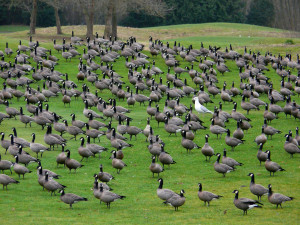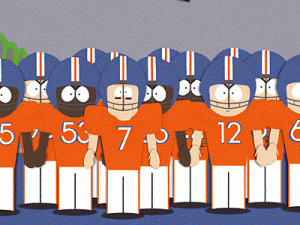Verotoxigenic Escherichia coli infections in humans cause disease ranging from uncomplicated intestinal illnesses to bloody diarrhea and systemic sequelae, such as hemolytic uremic syndrome (HUS). Previous research indicated that pigeons may be a reservoir for a population of verotoxigenic E. coli producing the VT2f variant.
 We used whole-genome sequencing to characterize a set of VT2f-producing E. coli strains from human patients with diarrhea or HUS and from healthy pigeons. We describe a phage conveying the vtx2f genes and provide evidence that the strains causing milder diarrheal disease may be transmitted to humans from pigeons.
We used whole-genome sequencing to characterize a set of VT2f-producing E. coli strains from human patients with diarrhea or HUS and from healthy pigeons. We describe a phage conveying the vtx2f genes and provide evidence that the strains causing milder diarrheal disease may be transmitted to humans from pigeons.
The strains causing HUS could derive from VT2f phage acquisition by E. coli strains with a virulence genes asset resembling that of typical HUS-associated verotoxigenic E. coli.
Whole-genome characterization and strain comparison of VT2f-producing Escherichia coli causing hemolytic uremic syndrome
Emerging Infectious Diseases, December 2016, Volume 22, Number 12, https://dx.doi.org/10.3201/eid2212.160017







 Now one group is acting like babies.
Now one group is acting like babies..jpeg) The New York Times reports
The New York Times reports.jpeg) Currently an estimated 2 million to 2.5 million boars roam the forests, suburbs and maize fields of Germany. No national program seems to be set up to eradicate this problem, but local hunters do their best by enjoying a
Currently an estimated 2 million to 2.5 million boars roam the forests, suburbs and maize fields of Germany. No national program seems to be set up to eradicate this problem, but local hunters do their best by enjoying a 
 "Though it is unlikely to get sick from visiting one of these places, health experts say germs are always a gamble. The more people who touch and visit a spot, the more germs there are in the mix, they say.
"Though it is unlikely to get sick from visiting one of these places, health experts say germs are always a gamble. The more people who touch and visit a spot, the more germs there are in the mix, they say. I didn’t find any statements on the
I didn’t find any statements on the